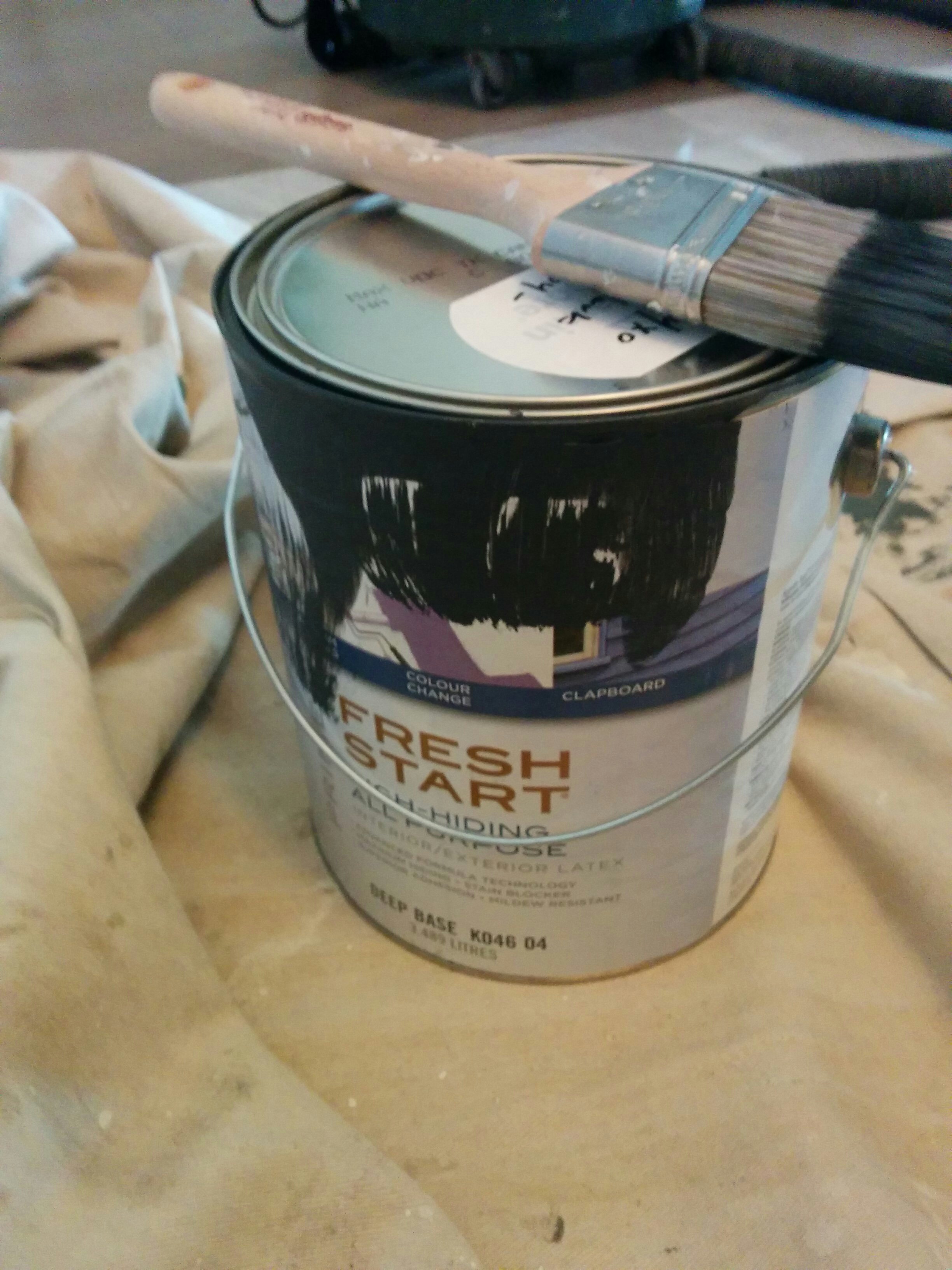Many paints are advertised as paint and primer in one, however there are still situations where you’ll want to use a separate primer for your Toronto home, we’ll go through them in detail here…
Any Situation Where Adhesion is a Concern
There are primers that are specifically designed to adhere to glossy surfaces. A couple of our favorite high adhesion primers are Sherwin Williams Multi-Purpose Water-Based Acrylic-Alkyd Primer and Benjamin Moore Advance Primer
Think of it like this:
If you have a glossy floor and you put a cloth on top of it, slides easily, doesn’t it?
Put that same cloth on top of a slab of unfinished concrete, doesn’t slide so easy, right?
Paint has trouble adhering to glossy surfaces, so there needs to be an intermediate step. We accomplish this by deglossing the surface by sanding, by priming the surface with a high adhesion primer, or by doing both. This is especially necessary when dealing with oil paint, so please read:
How do I know if the paint in my Toronto home is oil or latex?
Sealing out Stains
Many stains will bleed through latex paint, so a stain sealer is needed. Stains include pen marks (shame on you for drawing on your walls), mildew, water stains, knots in wood, nicotine, etc. A good shellac-based primer will seal these monstrosities out and allow you to topcoat with your choice of paint. One of our favorite shellac-based primer/sealers is Zinsser BIN, it’s like the Buckley’s of paint, “it smells awful, but it works!” Please use a respirator with shellac-based paint
Big Colour Changes
There are high-hide primers that streamline the task of big colour changes. If you are going from a mid-tone colour to an off-white using a high-hiding white primer is a great idea. High-hiding primer is cheaper than most finish coats, and it hides better than most finish coats.
Conversely, If you are painting a deep or intense colour, getting a grey primer will make the job that much easier. A good paint store will be able to advise you what shade of grey to use under the finish coat.
Porous Surfaces
A primer will soak into a surface better than a finish coat, so it’s advised to use a primer over new drywall and new drywall patch. Too often finish coat won’t penetrate deep enough into a drywall patch and that area will end up peeling over time, so if we use primer we can prevent that.
Are there any situations where I can use a “paint and primer in one” product?
Sure, if the surface is
- clean

- not too glossy
- there’s not a big colour change
- no stains
- not much patching – maybe a couple of nail holes and that’s it
If this sounds like your painting project then a “paint and primer in one” product is a great choice.


